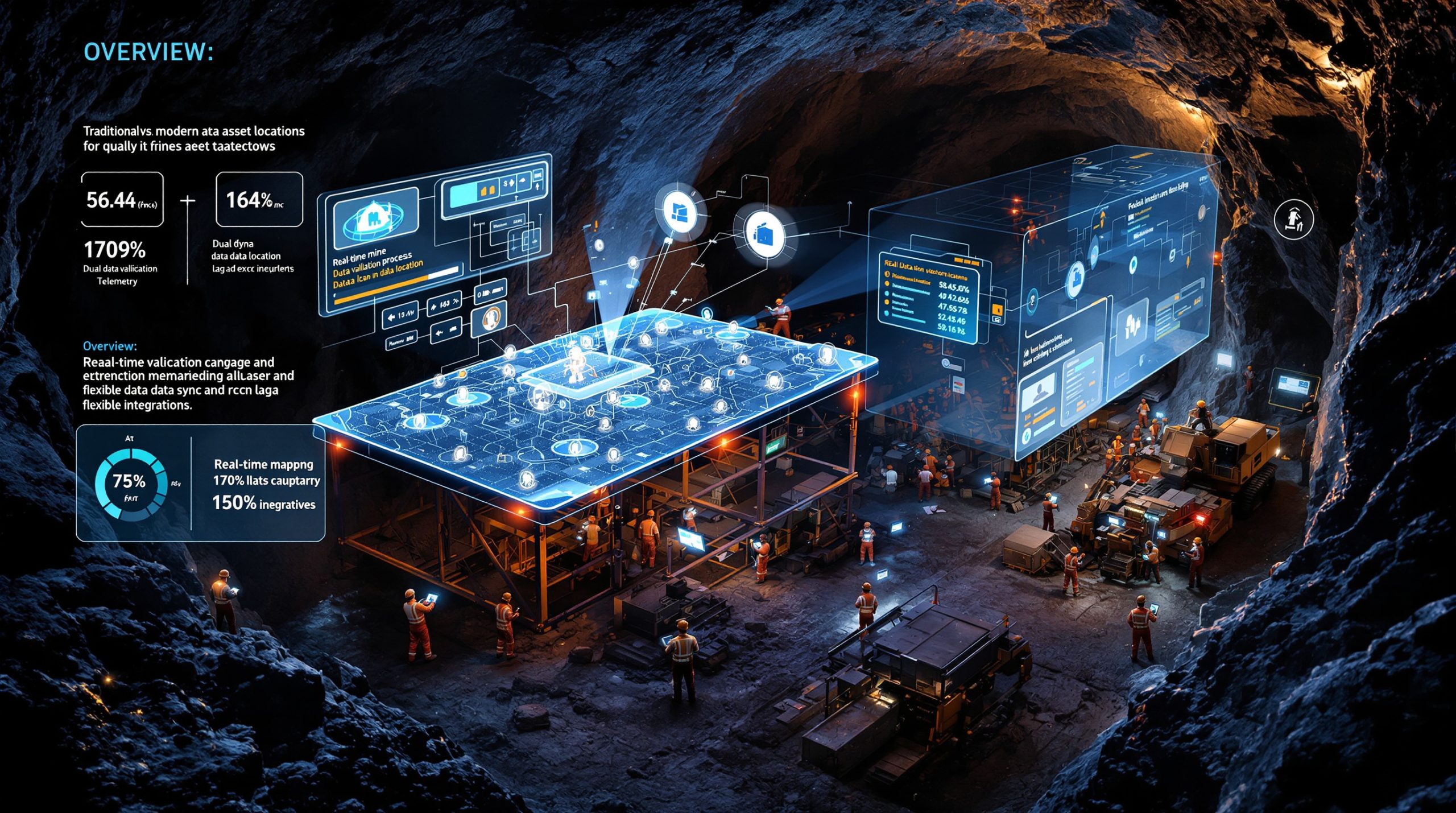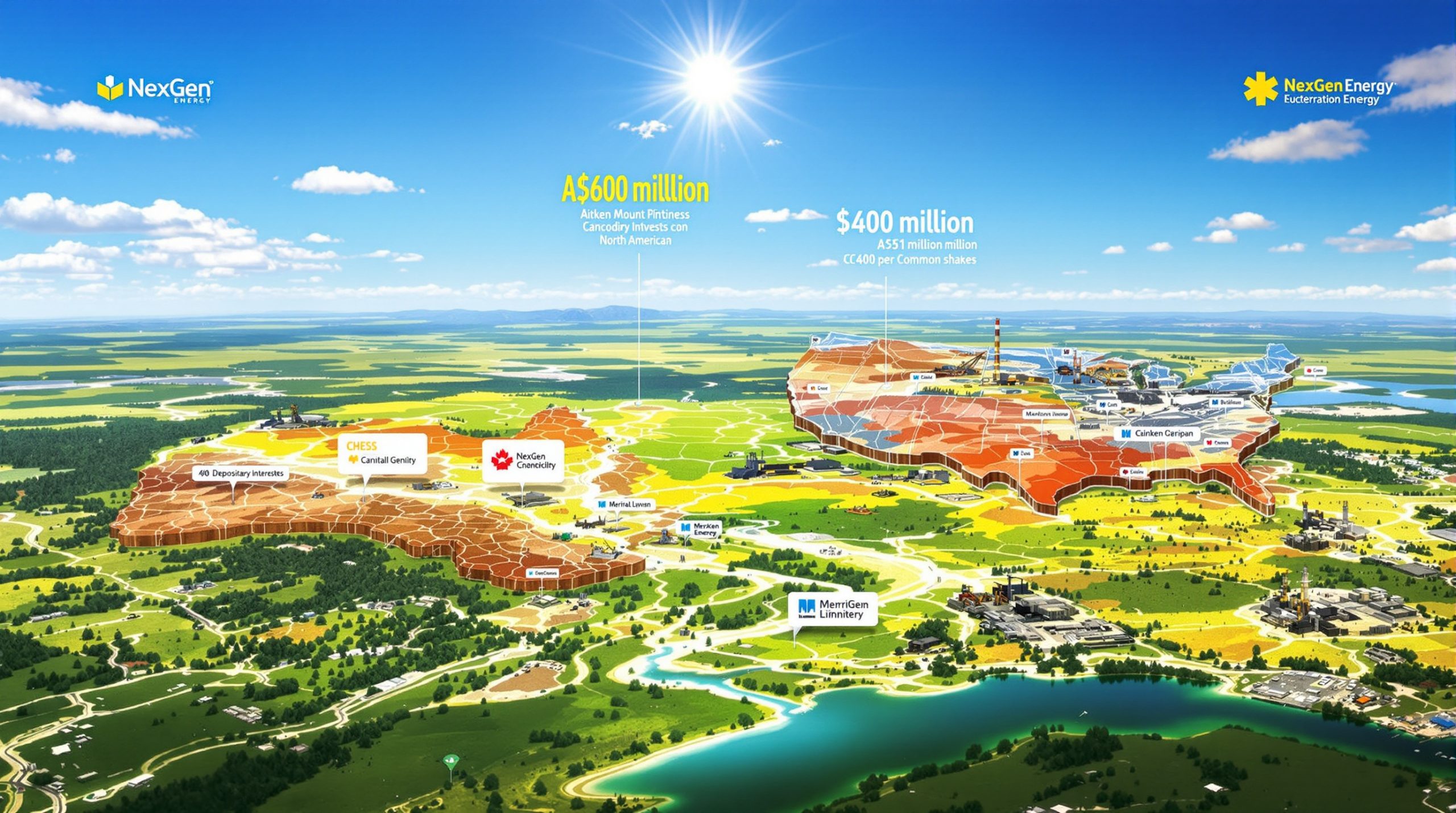Understanding the One-Time Differential for 65% Fe Iron Ore Derivative Contracts
A one-time differential represents a specific adjustment factor applied to iron ore contracts to account for variations in quality specifications. For the 65% Fe iron ore derivative contracts, this differential serves as a crucial mechanism for accurately valuing high-grade iron ore products that deviate from standard specifications, particularly when contract settlement approaches.
The global iron ore market, valued at approximately $180 billion in 2024, relies on these precise adjustment mechanisms to ensure financial derivatives accurately mirror physical market realities. With China importing over 1.1 billion tonnes of iron ore annually (approximately 70% of global seaborne trade), these differentials impact derivative contracts worth billions in notional value.
How One-Time Differentials Function in Iron Ore Markets
Purpose: Provides a mathematical adjustment to reflect changes in underlying physical specifications
Application: Applied once at settlement to adjust contract values
Market Impact: Ensures financial derivatives accurately reflect physical market realities
Timing: Published at specific intervals to coincide with contract settlement dates
The differential calculation incorporates sophisticated silica value-in-use assessments that measure economic impact on blast furnace efficiency. This mathematical averaging process uses simple arithmetic means rather than weighted averages, ensuring transparency and replicability for all market participants.
Why Are 65% Fe Iron Ore Differentials Important?
High-grade iron ore (65% Fe) commands significant premiums over standard 62% Fe benchmarks due to its superior steelmaking efficiency and environmental benefits. These premiums typically range between $15-25 per tonne, reflecting substantial economic advantages in steel production.
Steel industry research indicates that high-grade ore reduces coke consumption by approximately 3-5% per percentage point of iron content increase, translating to cost savings of $8-12 per tonne of hot metal produced. Additionally, mills using high-grade ore can reduce CO2 emissions by 15-20% compared to standard grade materials, creating environmental compliance advantages.
Benefits of the 65% Fe Differential Mechanism
Precise Valuation: Captures the exact premium value of higher iron content
Risk Management: Enables accurate hedging of high-grade exposure
Market Transparency: Provides clear pricing signals for premium products
Contract Settlement: Facilitates fair and consistent settlement procedures
The superior efficiency of 65% Fe ore stems from reduced gangue material processing requirements and improved thermal efficiency in blast furnaces. As environmental regulations tighten globally, this differential mechanism provides essential price transparency for premium products while enabling accurate risk management across the iron ore value chain.
How Are One-Time Differentials Calculated?
The calculation methodology for the 65% Fe iron ore differential incorporates multiple factors to ensure accuracy and market representativeness. The current methodology employs the simple mathematical average of high-grade iron ore silica value-in-use assessments (MB-IRO-0192) for specific periods, such as October 3-31.
These silica value-in-use assessments typically range from -$0.50 to -$2.00 per percentage point of silica content above baseline specifications. The calculation period spans nearly a month to ensure adequate data capture while maintaining settlement precision.
Key Components of the Differential Calculation
Silica Value-in-Use: Incorporates the impact of changing silica specifications
Mathematical Averaging: Uses simple mathematical averages of relevant price assessments
Temporal Range: Captures data points across specific time periods (e.g., October 3-31)
Forward Curve Impact: Assesses the effect of specification changes on the entire forward curve
The silica value-in-use metric quantifies the economic penalty of elevated silica content on blast furnace performance, incorporating flux requirements and thermal efficiency impacts. The temporal averaging period aligns with contract settlement cycles to ensure relevant price discovery, with mathematical precision extending to four decimal places to enable accurate derivative settlement.
What Market Contracts Use the 65% Fe Differential?
The one-time differential published by price reporting agencies directly impacts several exchange-traded financial instruments. The differential affects four primary SGX derivative instruments with combined open interest exceeding 500,000 lots during peak trading periods.
Monthly trading volumes for 65% Fe iron ore derivatives average 2.8 million tonnes of underlying commodity exposure. The SGX iron ore derivatives market represents approximately 15% of global seaborne iron ore trade by volume.
Financial Products Affected by the Differential
Futures Contracts: SGX MB Iron Ore CFR China (65% Fe Fines) Index Futures
Swap Agreements: SGX MB Iron Ore CFR China (65% Fe Fines) Swap
Options Instruments: SGX Option on MB Iron Ore CFR China (65% Fe Fines) Index Futures
Derivative Settlements: Used for final settlement calculations of open positions
Contract specifications require physical settlement capability, with the differential ensuring accurate pricing for delivery against the Brazil-origin fines benchmark (MB-IRO-0009). The derivative contracts employ cash settlement mechanisms that rely on the differential for final settlement value determination, while option contracts incorporate the differential into their underlying futures price calculations.
When and How Are One-Time Differentials Published?
The publication process follows a structured timeline and methodology to ensure market participants can incorporate the information effectively. Fastmarkets publishes the differential after 5:30 PM Singapore time to align with regional market close and minimize trading disruption.
The publication dates coincide with monthly contract settlement cycles used by major market participants. Price reporting publication protocols follow standardized timelines established through industry consultation processes.
Publication Process Details
Timing: Published after market close (e.g., after 5:30 PM Singapore time)
Frequency: Issued as a one-time adjustment on specific dates
Distribution: Made available through official price reporting channels
Implementation: Used for immediate contract adjustment on specified dates
Publication timing aligns with Singapore Exchange settlement procedures and international trading session closures. Distribution occurs through official pricing channels, ensuring standardized access across market participants, with implementation protocols specifying immediate effective dates for contract adjustment calculations.
What Factors Influence the 65% Fe Differential Value?
Multiple market dynamics affect the magnitude of the differential between standard and high-grade iron ore products. Environmental policy implementation in China has increased high-grade ore premiums by an average of $3.20 per tonne since 2023.
Steel mill efficiency improvements from high-grade ore usage range from 2-8% depending on furnace technology and operational parameters. Supply constraints for high-grade material affect approximately 25% of global seaborne iron ore trade.
Key Market Influences on Differential Values
Environmental Policies: Stricter emissions standards increase premium for higher-grade ore
Steel Mill Efficiency: Production economics favor higher Fe content during certain market conditions
Supply Constraints: Availability of high-grade material affects premium levels
Specification Changes: Updates to benchmark specifications necessitate differential adjustments
Specification changes affecting benchmark products require differential adjustments to maintain pricing accuracy and market functionality. Environmental regulations impact differential values through changes in relative demand for high-grade versus standard-grade materials, while supply-demand dynamics for premium products create volatility in differential values during market stress periods.
How Do Market Participants Use the Differential?
The differential serves various functions across the iron ore value chain, from miners to steel producers and financial traders. Physical traders utilize differential mechanisms to negotiate premiums for approximately 400 million tonnes of annual high-grade iron ore transactions.
Financial hedgers manage exposure to grade variations across derivative positions totaling over $50 billion in notional value. Steel producers incorporate differential calculations into procurement strategies affecting 800+ million tonnes of annual raw material purchases.
Applications Across the Iron Ore Ecosystem
Physical Traders: Benchmark for negotiating high-grade cargo premiums
Financial Hedgers: Tool for managing exposure to grade variations
Steel Producers: Input for raw material procurement strategies
Mining Companies: Pricing mechanism for premium product offerings
Physical trading applications incorporate differential values into cargo pricing formulas and contract negotiations. Financial hedging strategies utilize differential stability to manage basis risk between physical positions and derivative instruments, while commodity market hedging procurement optimization models integrate differential calculations to evaluate sourcing alternatives.
What Recent Changes Have Affected Iron Ore Differentials?
Specification updates and market evolution have necessitated adjustments to how differentials are calculated and applied. The three-month consultation process initiated on July 4, 2025, addressed specification changes affecting Carajas fines with typical silica content of 1.8-2.2%.
The high-grade silica value-in-use assessment (MB-IRO-0192) launched August 1, 2025, to support market transition. These specification modifications affect approximately 100 million tonnes of annual Brazilian iron ore exports.
Recent Market Developments
Carajas Specification Change: Modifications to silica levels in benchmark Brazilian fines
New Value-in-Use Metrics: Introduction of specific silica value-in-use assessments
Consultation Processes: Three-month open consultations on methodology changes
Transition Support: Implementation of mechanisms to facilitate market adaptation
Carajas specification changes involved modifications to silica level parameters requiring new value-in-use assessment methodologies. Transition support mechanisms include parallel publication of old and new assessments during adaptation periods, while consultation feedback incorporation ensures methodology changes reflect market participant needs.
How Do Silica Levels Impact Iron Ore Pricing?
Silica content represents a critical quality parameter that significantly influences the value of iron ore products. Each percentage point increase in silica content typically reduces iron ore value by $1.50-2.50 per tonne depending on market conditions.
Blast furnace flux requirements increase by approximately 15-20 kg per tonne of iron ore for each percentage point of silica above optimal levels. Regional variations in silica penalties range from $0.80-3.20 per percentage point across different markets.
Silica's Role in Differential Calculations
Inverse Relationship: Higher silica typically reduces ore value
Steelmaking Impact: Affects flux requirements and blast furnace efficiency
Regional Variations: Different markets place varying emphasis on silica penalties
Specification Evolution: Changing producer specifications necessitate pricing adjustments
Silica impacts steelmaking through increased flux requirements, reduced thermal efficiency, and elevated slag volumes. Value-in-use calculations incorporate both direct cost impacts and productivity effects of varying silica content, while regional specification preferences create geographic variations in silica penalty structures.
What Is the Relationship Between Physical and Derivative Iron Ore Markets?
The interconnection between physical iron ore trading and financial derivatives creates a complex pricing ecosystem. Physical iron ore transactions totaling 1.6 billion tonnes annually provide price discovery inputs for derivative markets.
Derivative trading volumes exceed 4.2 billion tonnes of underlying commodity exposure, representing 2.6x physical trade. Basis convergence between physical and financial prices typically occurs within $0.50-1.00 per tonne at settlement.
Physical-Financial Market Dynamics
Price Discovery: Physical transactions inform derivative pricing
Risk Transfer: Derivatives enable hedging of physical exposures
Convergence: Physical and financial prices converge at settlement
Liquidity Enhancement: Derivatives increase overall market liquidity and transparency
Price discovery mechanisms incorporate both physical transaction data and derivative trading information to establish representative market values. Risk transfer functions enable physical market participants to hedge exposure through standardized financial instruments, while convergence mechanisms ensure derivative settlement prices align with underlying physical market values.
FAQs About 65% Fe Iron Ore Differentials
What exactly does "65% Fe" signify in iron ore contracts?
The 65% Fe designation indicates that the iron ore contains approximately 65% iron content by weight, representing a premium high-grade product compared to the standard 62% Fe benchmark. This higher iron content translates to improved efficiency in steelmaking processes and reduced impurities. The 3 percentage points difference in iron content typically commands premiums of $12-18 per tonne in normal market conditions.
How frequently are one-time differentials published?
One-time differentials are typically published according to specific market needs, often coinciding with contract settlement periods or when significant specification changes occur. Historical frequency ranges from quarterly to annual depending on specification stability. They represent discrete adjustments rather than continuous price assessments, with publication timing aligned to minimize market disruption.
Can market participants provide input on differential methodologies?
Yes, price reporting agencies typically conduct open consultations before implementing methodology changes. Market participants can provide feedback during these consultation periods, which typically span 60-90 days to allow adequate stakeholder input. This collaborative approach helps ensure the differentials accurately reflect market realities and meet participant needs for transparent price formation.
How do iron ore derivatives benefit the physical market?
Iron ore derivatives provide price transparency, risk management tools, and liquidity to the physical market. They allow producers, consumers, and traders to hedge price risks, facilitating smoother physical market operations and long-term planning. The presence of liquid derivative markets enables more efficient price discovery and creates reference points for physical contract negotiations.
What role do price reporting agencies play in the iron ore market?
Price reporting agencies provide independent price assessments that serve as benchmarks for physical contracts and settlement mechanisms for financial derivatives. Their methodologies aim to capture representative market values through systematic data collection and analysis, ensuring market transparency and facilitating efficient price discovery across the iron ore value chain.
Further Exploration:
Readers interested in learning more about iron ore price trends and derivatives can explore the SGX derivatives products page, which provides additional context on commodity price assessment methodologies and market practices. Furthermore, those looking for a 2025 iron ore forecast and iron ore demand insights should monitor how declining iron ore prices might impact these differential calculations in the coming months.
Want to Discover Major ASX Mining Opportunities Before the Market?
Discovery Alert's proprietary Discovery IQ model instantly identifies significant ASX mineral discoveries, transforming complex data into actionable investment insights. Explore how past mineral discoveries have generated substantial returns by visiting Discovery Alert's dedicated discoveries page and position yourself ahead of the market with real-time alerts.




